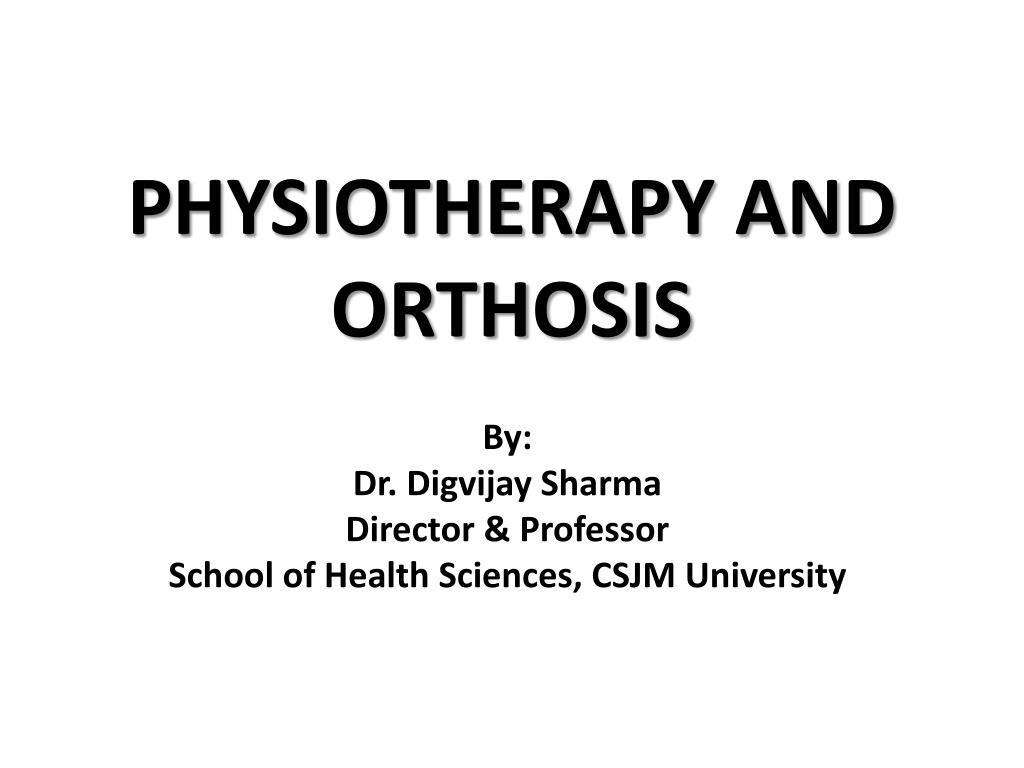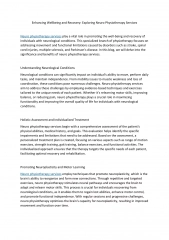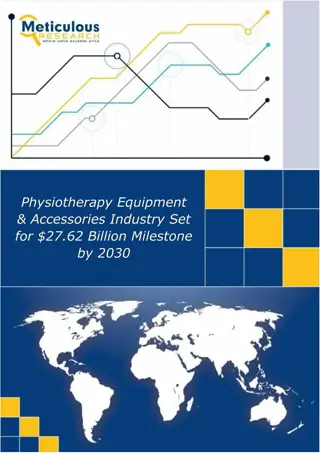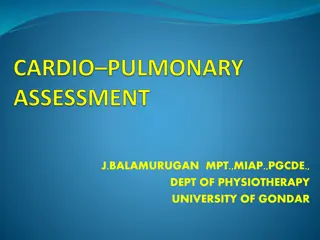Understanding the Role of Physiotherapy in Orthosis Provision
Physiotherapy plays a crucial role in the prescription and fitting of orthosis after acute injuries. This comprehensive intervention involves assessing patients' needs, aiding Orthotists in fabricating suitable orthosis, and preparing patients for its use. Various materials such as rubber, plastics, metals, and thermoplastics are utilized, with a focus on patient comfort and functionality. Assessments before and after orthosis provision are essential to ensure patient satisfaction and address any concerns. Pre-assessments involve understanding patients' needs and expectations. Overall, physiotherapists play a vital part in ensuring the effective use of orthosis for patients' rehabilitation.
Download Presentation

Please find below an Image/Link to download the presentation.
The content on the website is provided AS IS for your information and personal use only. It may not be sold, licensed, or shared on other websites without obtaining consent from the author. Download presentation by click this link. If you encounter any issues during the download, it is possible that the publisher has removed the file from their server.
E N D
Presentation Transcript
PHYSIOTHERAPY AND ORTHOSIS By: Dr. Digvijay Sharma Director & Professor School of Health Sciences, CSJM University
Importance Physiotherapy interventions are required after any acute injury in the form of a complete rehabilitation intervention. Major role of physiotherapy involves the assessment of patient s needs and abilities so that the Orthotists can prescribe and fabricate correct and effective orthosis for the patients. Physiotherapy also plays a keen role in preparing the patients to keep up with the orthosis and to help them with support, aid, preparatory exercises and strengthening of particular area where orthosis is to be worn. The major need of a physiotherapists is to make the patient feel comfortable with orthosis and inhibit faulty postures and movements.
Materials Materials like rubber, plastics, steel, aluminium, alloys, leather, canvas, etc are generally used to make an orthosis. The choice of material depends upon the patient s strength, durability of orthosis, the weight to be absorbed by the orthosis, the flexibility and allowed motion at the site of orthosis, patient s comfort, distribution of forces at the site of orthosis, etc. Traditional orthosis used metal in combination with leather. These days, Polypropylene is generally the most commonly used thermoplastic with relatively low cost, higher strength than other materials and low weight making it suitable for orthosis.
MATERIAL USAGE Traditionally used material to make orthosis. Metal was used to make orthotic device and leather accompanied in the form of straps. METAL + LEATHER Easily moldable and provides close fitting so that patient s orthosis is not loose or excess taut. Commonly used Polypropylene These return to their shape or gain another shape on re- heating and thus are adjustable. THERMOPLASTICS Aluminium and stainless steel uprights used for bulky patients. Combination of plastic is to reduce the weight of metal orthosis PLASTIC + METAL Used for higher strength and low strength with increased durability. Used in latest made orthosis designs Often covered with inner linings of thin padding. CARBON OR GRAPHITE
Assessment Before prescribing any orthosis a physiotherapist must assess the patients for their needs and their fears regarding orthosis. If they have been given an orthosis before what were their feedback regarding them and what problems they faced while wearing them. Pre and post assessment of patients is very necessary and even feedback is dependent upon the level of satisfaction of patients.
Pre assessment Pre assessment deals with asking and assessing patients regarding their: Subjective assessment which may include patient s needs, expectations, demands, availability, economical and useful. Objective assessment may include knowledge of type of paralysis or injury, prognosis, postural stability, ability or coordination, assessment of ROM, sensation, proprioception, skin continuity, alignment, muscle power, muscle tone, gait pattern, recruitment of muscles, higher functions like vision, ability to hear, level of deformity, limb lengths, limb girths, etc.
Post Assessment Post indicating and prescribing the patients with orthosis, the physiotherapists must take feedback into considerations. Post assessment includes the level of functioning of patients, comfort of patients, assessment whether to tighten or loose the orthosis, etc. It must be taken care that patients do submit their feedback regarding orthosis so that any improvement can be documented. Post assessment is also necessary to decide when to discontinue orthosis, since it is a temporary device it must be discontinued whenever not needed.























